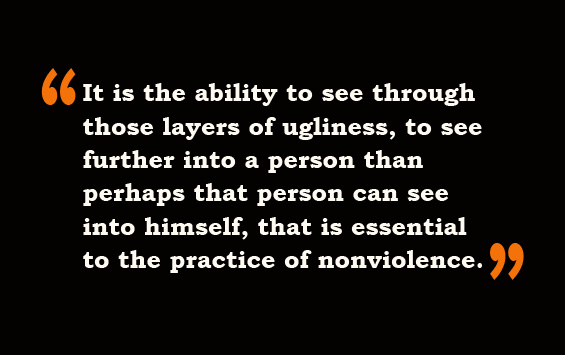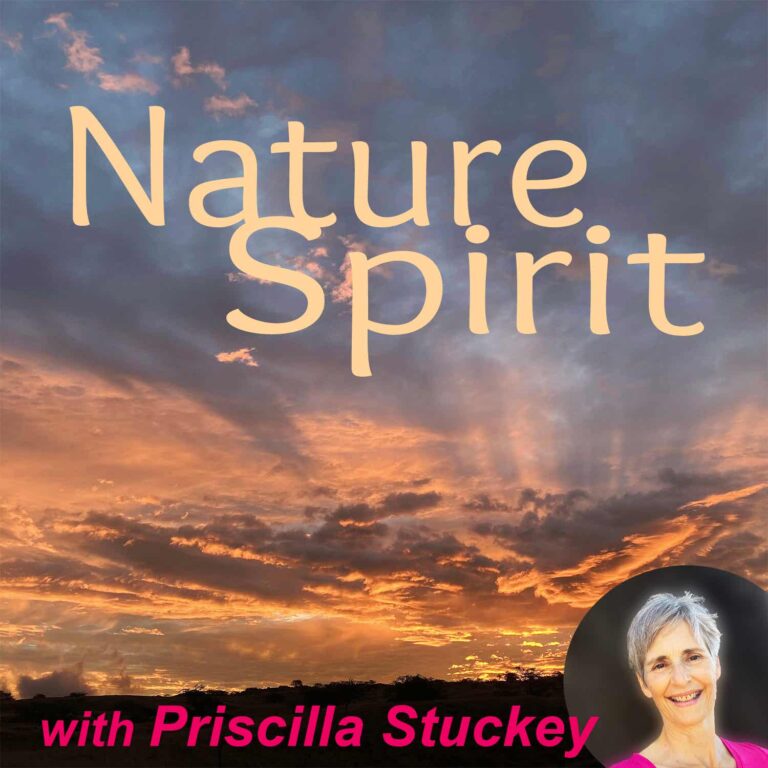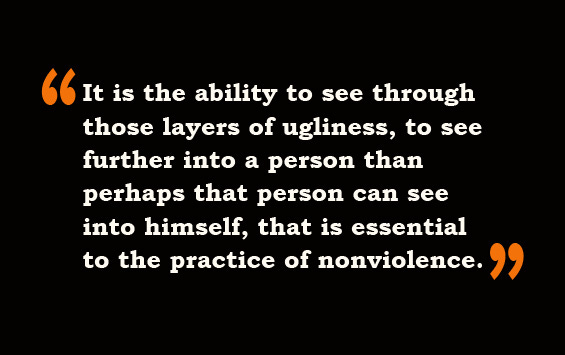Transcript
This week the we are remembering the great Representative John Lewis. Which has led me back to his interview some years ago with Krista Tippett of On Being. It was an hour I will never forget—I was eating a packed lunch in my car, parked in a deserted lot behind a bank, hooked up to a car charger, streaming the podcast. And as I listened, I felt my heart pound. Here was someone with good news—a person who could help us.
I feel that way even more strongly today. John Lewis has medicine for us, a medicine he carried forward from the civil rights movement. One of his words for this remedy was “a graceful heart.” A graceful heart, he wrote, is “an accepting and open heart, a heart that holds no malice toward the inflictors of his or her suffering.”
This is a strong medicine, and many days I’m not sure I want to take it. Every day so many terrible things are happening in this country that some days it seems the only two choices for mood are “fuming” and “furious”—and those are the good options. Often my heart does not feel graceful in the least. In fact, it can easily slide the other way—toward malice. Toward a touch of acid. I watch it happen to a lot of us—so tired of all the cruelty, all the lies, that our hearts can’t take it anymore.
But then I think of the civil rights marchers and freedom riders and lunch counter sitters, and how they refused to let acid seep into their hearts. And I am in awe of them for that.
John Lewis called it love. He wrote in his memoir that this is not about “loving something that is lovely to you.” This kind of love is harder, he said, and a lot more encompassing, and for the civil rights activists it took a lot of practice. In his college days the student activists would meet one evening a week to study this love so that they would be prepared when they sat in at the local segregated lunch counters, where only whites were allowed. They rehearsed. They did role-playing. They acted out what would happen when someone pulled out a chair from under them or attacked them or spit on them.
 Most of all, they practiced feeling compassion for their attackers. They tried to see beyond the ugliness or hate or fear at the surface of a person and to reach deep, down below all that, to find the spark of goodness at their heart. Lewis wrote in his memoir of the civil rights movement that one of their methods was to imagine the person—to “actually visualize him or her,” he wrote—“as an infant, as a baby. If you can see this full-grown attacker who faces you as the pure or innocent child he or she once was—that we all once were—it is not hard to find compassion in your heart,” he wrote.
Most of all, they practiced feeling compassion for their attackers. They tried to see beyond the ugliness or hate or fear at the surface of a person and to reach deep, down below all that, to find the spark of goodness at their heart. Lewis wrote in his memoir of the civil rights movement that one of their methods was to imagine the person—to “actually visualize him or her,” he wrote—“as an infant, as a baby. If you can see this full-grown attacker who faces you as the pure or innocent child he or she once was—that we all once were—it is not hard to find compassion in your heart,” he wrote.
The activists wanted to find this compassion because they were committed to responding nonviolently. Now, we may have heard so much about nonviolence over the years that we rarely stop to think anymore what it means. The word itself sounds merely like an absence of something—the absence of violence. But when I read John Lewis’s memoir or when I listen to him talk about what those activists were actually doing, I hear a richness and a possibility and power—the power of a thousand suns blazing bright.
Because they understood nonviolence as a tapping in to the power at the heart of the universe. They were inspired by Gandhi, and Gandhi called it satyagraha, literally, “staying steadfast in truth.” It’s the power of truth, or reality, to shed light on everything false. Satyagraha, if you translate it literally, means “truth-force.” Martin Luther King liked to translate it “love-force,” because he saw love as the truthful bedrock of reality.
And John Lewis had his own word for it; he called it “soul-force.” And this is how he described soul-force: it’s “about a fundamental shift inside our own souls,” he wrote. “It is rooted in the achievement of inner unity, of inner freedom, of inner certainty. It is a calm, sure place we find inside ourselves. And once found, that place is not swayed or disturbed or affected in any way by the thousands of details of the world around us. …”
Satyagraha is also the word for the actions that the activists took: they acted by staying steadfast in truth—which meant acting out of love, acting out of nonviolence and nonharm. Because if there is in every person that bedrock of goodness, then, Lewis said, “you don’t have a right as a human to abuse that spark of the divine in your fellow human being.”
The civil rights workers succeeded. They succeeded wildly. They succeeded politically in getting laws changed—civil rights laws. Voting rights laws. They succeeded socially in changing cities and communities—integrating buses, integrating schools and restaurants and lunch counters. And they succeeded in acting from love. John Lewis was proud of remembering that never did any of them retaliate in violence.
The work of civil rights is not finished. As John Lewis often said, the struggle is a long, long one. And the next act of that struggle is happening right now. The Voting Rights Act has been weakened. Secret police are attacking peaceful people at Black Lives Matter protests. The atrocity of separating brown children from their parents is still happening at the border.
Is it possible to respond with love? Plenty of people right now are saying yes, marching peacefully and with loving intent. They are carrying forward the vision.
And I remain in awe of the Black activists in the sixties, and the tremendous strength it took for them to set in place that vision of nonviolent love-in-action. Here they were, as Black people, disenfranchised for hundreds of years, standing up for their humanity and their rights, being very visible and very vocal at a time when most white people in the country were hostile to the idea of equality and perhaps even wanted to beat them up and kill them.
The civil rights workers could have chosen armed resistance. Violence works too. It can get a lot of jobs done. But they didn’t go that route because they were inspired by a faith that reality is better than that. That reality is built on a bedrock of truth and love. And that this truth and love reside within each person. And they believed that if they acted in love, they could get the job done without causing more harm, including more harm to themselves.
Because here’s the thing: every act of violence has repercussions. It causes further traumas. I’m old enough to see that acts of violence I witnessed in my childhood have traveled down through one or two generations by now. Some people say every violent act reaches down at least a hundred years. John Lewis said that choosing to act with love instead of hate was a way of bringing out the goodness in the other, a way of saving them. And, he added, “in saving the other person, in rescuing or redeeming the other person, you’re rescuing, you’re saving, yourself.” One thing I hear in those words is that in preventing trauma from escalating, you help everyone, including yourself.
And here’s another thing about how they saved themselves too. Responding with anger and violence would have allowed hate to seep into their hearts. And they couldn’t afford that. “Hate is too great a burden to bear,” as Martin Luther King Jr. so often said. Hate works on the heart like acid. It eats away at our imagination so we can see only a limited range of options. It erodes our will and tempts us toward despair, toward thinking the problems are too entrenched to ever be solved.
But the freedom riders and the counter sitters and the marchers had tremendous energy for change—and tremendous energy for thinking up creative ways of bringing about change. And they got that energy from staying in a place of love. They never allowed the acid of hate to drip into their hearts, and it was the ultimate warrior move: it kept their strength and their power at peak readiness. When the time came, their creativity and will and purpose could operate at full capacity; they had all the energy they needed to tackle something so immense, so seemingly immovable, as racism. By keeping the heart graceful, they preserved their power to act with determination and also with grace.
I’ve got more to learn about keeping the heart graceful. We white people who want to be allies have a lot more to learn overall from the civil rights movement—about persistence and patience over generations. About bearing witness without despair, and about acting decisively—confronting power, and confronting it with love.
And, as John Lewis said, about never giving up, even on your adversary—though I notice he did refuse to cooperate with the current president. But he never did lose sight of the larger mission, and it is a mission that demands all our creativity and all of our graceful hearts. “We’re talking about building a lasting peace,” he said. “A community at peace with itself.”
And he kept that faith to the end. Two days before he died he wrote, “Democracy is not a state. It is an act, and each generation must do its part to help build what we called the Beloved Community, a nation and world society at peace with itself.”
For digging deeper
John Lewis’s memoir of the civil rights movement, cowritten with Michael D’Orso, is Walking with the Wind: A Memoir of the Movement, published in 1999 when Lewis was 59.
His 2013 interview with Krista Tippett, “John Lewis: Love in Action,” is available at On Being.
A one-hour documentary about John Lewis is streaming on PBS for the next few weeks: Get in the Way, directed by Kathleen Dowdey. A three-minute clip from the documentary, the segment on the Tuesday night nonviolence trainings led by the Rev. Jim Lawson, is also streaming on PBS for the next few weeks.
The very first episode of Henry Louis Gates Jr.’s Finding Your Roots program in 2012 delved into the family histories of John Lewis and Cory Booker. Available for the next while on PBS.
John Lewis wrote “Together, You Can Redeem the Soul of Our Nation” just two days before he died for release on the day of his funeral, which was yesterday. If you read only one thing from John Lewis, read this.
















